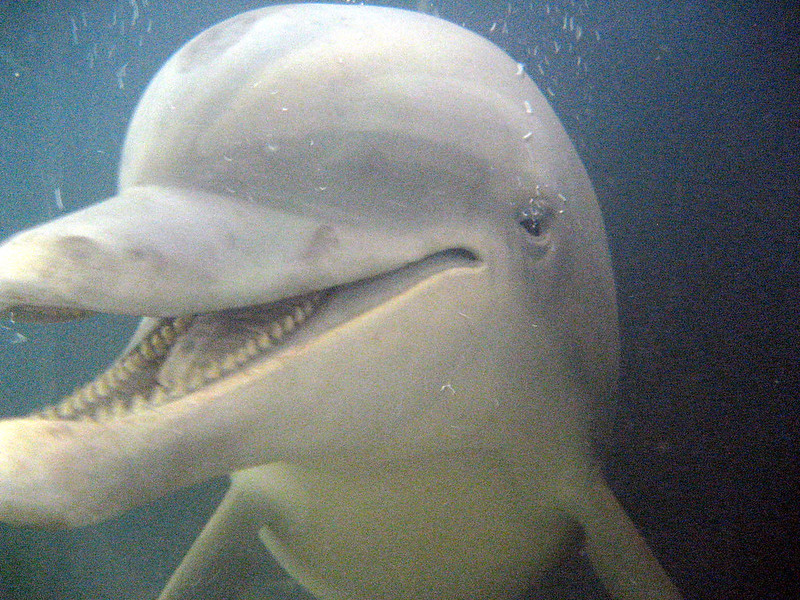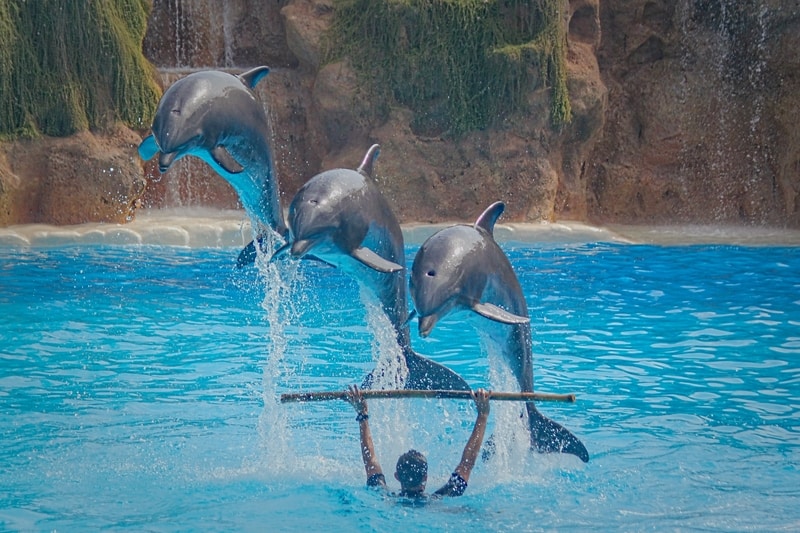Entrepreneurs in New Zealand have developed a promising solution to unethical practices of keeping aquatic animals in captivity by introducing a robotic dolphin that looks almost identical to its living counterparts.
—
Edge Innovations, a New Zealand- based company, is collaborating with American creators to develop animatronic dolphins that come close to the real deal. Capable of responding to questions, swimming for hours on end, and coming into close contact with humans- which would usually be harmful to real dolphins- the innovation offers ethical security.
The robotic dolphins, controlled by remote, might sound unappealing to skeptics. However, as marine parks around the world are facing pressure to abolish the unethical practice of featuring real whales and dolphins, animatronics provide a promising alternative. The prototype weighs more than 270 kg and is indiscernible from the real thing, the team says. A test audience had been unable to guess that the dolphin was not real.
Roger Holzberg, a designer of the life-size robot bottlenose dolphins, says, “the marine park industry has had falling revenues for over a decade due to ethical concerns and the cost of live animals, yet the public hunger to learn about and experience these animals is still as strong as ever.” Holzberg is currently working with Walt Conti, who is behind some of cinema’s most famous sea creature feature films- including Free Willy and Deep Blue Sea- to build the animals.
“We believe that it’s time to reimagine this industry and that this approach can be more humane, and more profitable at the same time,” Holzberg added.
Costing approximately NZ$40 million per dolphin, the biggest challenge is to prove to investors that the robotic sea creatures will be cheaper in the long-term than their real counterparts.
Li Wang, a business developer for Edge Innovation, said that despite costing four times more than real dolphins, they would last longer. “We have to persuade them that it is a profitable business, even more profitable than live animals,” he says, adding that the robots do not require the same expensive maintenance as real dolphins. Bottlenose dolphins, on average, live less than 20 years in captivity, but 30-50 years in the wild. This highlights not only the potential profitability of the robotic dolphins, given that animatronics will last longer than 20 years, but it also demonstrates how marine parks significantly decrease the lifespan of dolphins.

A prototype of Edge Innovation’s robotic dolphin. Photo: Todd Lappin/Flickr.
Before COVID-19 halted construction and development, at least 30 aquariums were being built in China, according to Li Wang, and at least one large Chinese corporation had planned to replace real dolphins with robots.
The company Red Star Macalline Group has sponsored the first phase of the robotic dolphin’s development and is considering introducing it to the Chinese market. The company stated they are planning to adopt robotic dolphins and other aquatic animals in their aquarium projects and announced a strong eagerness to distribute them across the country.
Melanie Langlotz, one of the entrepreneurs behind the project, had been commissioned to develop a digital component for aquariums but faced challenges when some companies did not want to be involved in a project that would eventually supply live animals to captivity.
A Promising Solution
Animal rights advocates welcomed the move. Elisa Allen, an animal rights activist at the People for the Ethical Treatment of Animals, says that she hoped robotic animals ‘will replace real ones in marine parks worldwide’.
In their natural habitats, dolphins are able to swim over 60 kilometers a day and live in tight-knit family groups. However, in captivity, they are confined to concrete pools filled with chemically treated water and forced to entertain strangers. “In 2020, cutting-edge technology allows us to experience nature without harming it,” Allen says.
Li Wang believes that the robotic dolphin will be received well by the public. “If we think about the younger generation, they spend far more time than us playing electronic games online. We actually need to ask ourselves what is real and what is fake,” he said.
As we are spoilt for choice when it comes to entertainment and ways to captivate audiences, harming innocent animals is no longer deemed as ‘necessary’ as it used to be when the resources available today did not exist. Such a solution should trigger others to think alike and to be as innovative in offering products and services that can replace outdated, unethical ones.
Featured image by: Todd Lappin
You might also like: Animal Captivity Is A Dangerous Distraction from Real Conservation Efforts

















